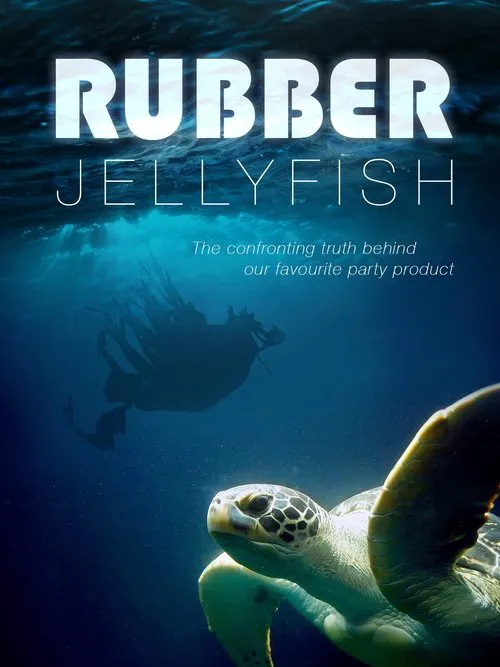Rubber Jellyfish

Plot
In the Australian documentary "Rubber Jellyfish," director Carly Wilson takes on a crucial yet often overlooked environmental issue: the impact of helium balloons on the environment, wildlife, and human beings. Wilson sets out on a personal journey to understand the science and various perspectives on this multifaceted problem, seeking answers from key players in the fight to ban balloons. Wilson's quest begins on Australian shores, where she witnesses the devastating effects of helium balloons on the marine ecosystem. She encounters images of sea turtles entangled in discarded balloons, suffocating from the gas released when the balloons pop, and even being forced to ingest the toxic rubber that laces the balloons. The visuals are disturbing and heartbreaking, leaving a lasting impression on the viewer. These disturbing scenes are juxtaposed with the seemingly innocent, festive atmosphere that surrounds balloons at parties and celebrations. The documentary skillfully exposes the disconnect between our perceptions and the harsh realities that balloons pose to the environment. As Wilson travels across the country, she delves deeper into the world of science, meeting marine biologists who study the effects of helium on marine life and interview experts on the toxicology of the rubber that makes up the balloon itself. One of the most compelling aspects of the documentary is its comprehensive portrayal of the various viewpoints on the issue. Wilson consults with environmental activists who have made banning balloons their top priority, as well as with business owners who depend on balloon sales for their livelihood. This nuanced approach provides a complete picture of the complex issues surrounding balloon production and disposal. The impact on humans is equally alarming. The documentary reveals that helium is a hazardous gas when inhaled at high volumes, and the documentary shows Wilson meeting children who have suffered from near-fatal attacks of helium poisoning. It also examines the economic burden of balloon-related injuries and the devastating consequences for families who have lost loved ones to such tragedies. In her investigation, Wilson also visits politicians who seem dismissive of the issue or are hesitant to take action. The documentary masterfully captures their reluctance to confront the problem, which stems from fears of upsetting balloon manufacturers, damaging the tourist industry (helium balloons have been a significant contributor to many tourist attractions globally, such as helium-filled zeppelins and balloon festivals) and even threatening cherished cultural and social customs. Despite the obstacles that Wilson encounters, she shows unwavering dedication to revealing the harsh truth behind the balloon industry. Her quest takes a more optimistic turn when she meets with local communities in Australia who have begun to take matters into their own hands. Residents from coastal towns and cities have banded together to organize beach clean-up events and campaign for policies that prioritize the environment. The documentary ends on a hopeful note, with Wilson meeting Australian policymakers who are finally starting to take action to ban balloons. Though this change is long overdue, "Rubber Jellyfish" is an urgent reminder that it is never too late to make a difference. By shedding light on the often-overlooked effects of helium balloons, the documentary inspires viewers to take responsibility for their actions and advocate for policies that prioritize the well-being of the planet and its inhabitants.
Reviews
Recommendations


